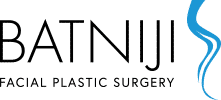Earlobe Repair by a Trusted Facial Plastic Surgeon

In our blog last week we wrote about the surgical procedure known as otoplasty (ear surgery). The term comes from “ous” the Greek word for ear and “plassein” meaning to shape. We noted what the surgery entails, and a few of the issues it can be used to correct such as ear pinning, or ear pinback, to reduce protrusion and the removal of excess skin and cartilage.
This week let’s talk about using the otoplasty procedure to correct issues of the earlobe.
What Are Some Things That Can Be Earlobe Issues?
Earlobe issues can be broken down into two categories. There are hereditary cosmetic and aesthetic issues, and then there are those caused by injury or trauma.
Earlobe Reduction and Shortening
Earlobes come in many shapes and sizes. Some lobes are overly large. Some are longer than desired. These are aesthetic and not medical issues. But the embarrassment and self-consciousness associated with large ears can cause mental anguish leading many people to go to great lengths to try to cover their ears whether with their hair or a knit cap or beanie.
The procedure to reduce large earlobes takes about an hour. Local anesthesia is used. The ear lobe cartilage is reshaped to the desired outcome taking into account the structure of the ear and a final appearance that appears natural and symmetrical to the other ear. Recovery takes about a week to heal and over-the-counter or prescription medicine may be used for pain.
On the other hand, earlobe shortening results in a short recovery of just two or three days. It does not require any rest time from work or school. And a non-prescription, over-the-counter pain medication will usually suffice to control pain.
Earlobe Trauma Caused by Jewelry
Ear piercings are a decorative body modification that has been around since early human history. Although some people are born with long earlobes they can also be caused by the other main source of earlobe issues: heavy jewelry on the ear.
The closure of earlobe holes or the small puncture wounds made by earlobe piercing is the simplest form of earlobe repair. Ear piercings can heal on their own. But if the wound or piercing is kept open until it scars, heals, and skin replaces the wound, the body does not get the chance to heal and the resulting hole is permanent.
To reverse this process and close earlobe holes, Dr. Batniji will remove the skin on the inside of the piercing so the wound will heal and cover the hold. There is no recovery time and minimal pain, even for the closing of many piercings. But separate appointments may be needed if the piercings are very close together.
Stretched Earlobe Holes
When the earlobe is weighed down by heavy jewelry, over time the earlobe can be permanently stretched out. The piercing can even stretch so much that earrings will not stay in place causing the earrings to fall out and be misplaced.
Ideally the piercing is closed completely to repair stretched earlobes. Then the earlobe can be pierced again. Dr. Batniji recommends that patients wait about a month after an earlobe repair to have the ears re-pierced.
Split Earlobes
Another complication of heavy earrings is split earlobes. This can also be caused when the earring gets caught and the earring is accidentally pulled off the ear. A partial split earlobe or long, thin piercing, can result. Or more commonly when the earring is pulled through the earlobe a full split is caused.
The repair of split earlobes is also performed under local anesthesia. The procedure takes about an hour. Dr. Batniji removes the stitches or suture after a week. And again, the ears can be re-pierced in about a month.
Multiple Splits
Because many people wear multiple earrings, multiple splits may occur. The procedure to fix a number of splits is the same as with one split. But the likelihood of scarring is increased when there are many splits close together. When this is the case, one split may be treated at a time so Dr. Batniji can address any scarring issues.
Gauged Earlobes
Gauging of the earlobes is also a very old body modification but one that until recently was relatively uncommon. Gauging is the stretching of the earlobe holes so round spacers can be fitted. Because of its increasing popularity, experience with the various techniques and methods to repair and reconstruct gauged earlobes is increasing. Fixing gauged earlobes can be a challenge. But Dr. Batniji uses his expertise to devise a strategy; surgery can take up to four hours or more under local or general anesthesia. Dr. Batniji generally prescribes a day or two days of bed rest. The stitches will be removed at the follow-up appointment a week later.
Keloid Scars of the Earlobe
Keloids are raised scars that by definition spread from the original site of injury. Scars that are limited to the injury site are called hypertrophic scars. Keloid scars can be red, brown or tan in color. They occur in the earlobe from piercings or when the earlobe has suffered a trauma or injury. Keloids are more common in those with dark skin, but can happen in those with all skin types. Keloid scars are just an extreme example of the body’s natural healing process.
To treat keloid scars Dr. Batniji will perform an excision and then inject the area with a steroid to reduce inflammation and promote healing. Because keloids have a high rate of recurrence multiple steroid treatments may be prescribed. The removal of earlobe keloid scars is done under local anesthesia. The healing time is a week and there is no downtime from school or work. Removal of stitches may require a follow-up appointment a week after the procedure.
Schedule an Appointment to Learn More
If you would like to know more about otoplasty and earlobe repair, reduction, and closure procedures, book a complimentary evaluation by contacting the office of Dr. Rami K. Batniji M.D., F.A.C.S. at his Beverly Hills (310-467-2180) or Newport Beach/Orange County office (949-650-8882). Prospective patients can also email the staff to schedule their initial consultation and to discuss any concerns or questions. We can also assist with travel and financing arrangements.
Dr. Batniji is among only a handful of doctors who specialize in the face and neck regions in Southern California. As a result of this narrow focus, he is able to ensure the best results to rejuvenate those areas in a way that is natural in appearance, both surgically and non-surgically. He is board-certified by the American Board of Facial Plastic & Reconstructive Surgery and by the American Board of Otolaryngology. He has written extensively in a number of medical journals and speaks regularly at medical conferences and in mass media. Dr. Batniji will meet with you for a consultation to discuss your concerns and whether or not otoplasty and earlobe repair, reduction, and closure procedures can best address your needs.

